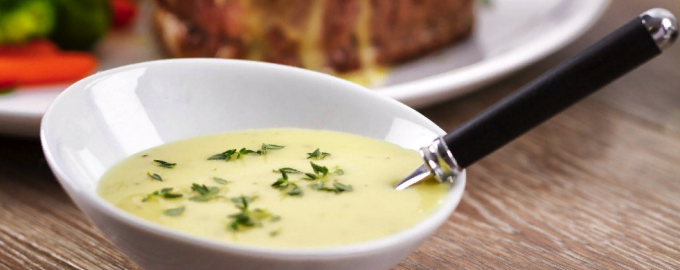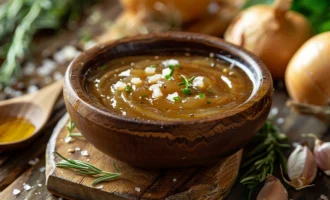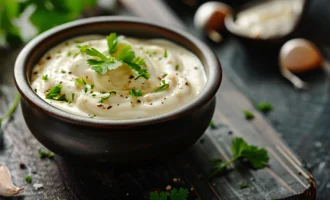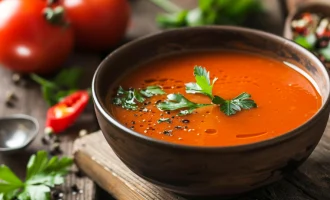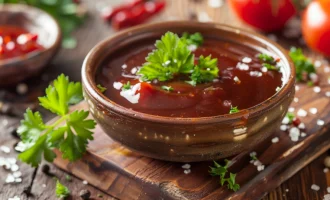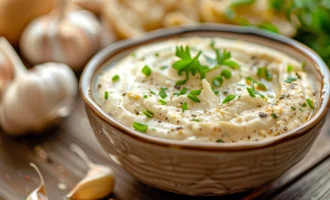Ingredients
- 3 egg yolks
- 200g clarified butter
- 2 tablespoons white wine vinegar
- 2 tablespoons fresh tarragon leaves, chopped
- 1 tablespoon shallots, finely chopped
- Salt and pepper to taste
Per serving
Calories: 631 kcal
Proteins: 6.6 g
Fats: 66 g
Carbohydrates: 3.2 g
Method
-
In a small saucepan, combine the white wine vinegar, chopped tarragon leaves, and finely chopped shallots. Place the saucepan over medium heat and let it simmer until the liquid has reduced to about half.
-
In a separate heatproof bowl, whisk the egg yolks until they become frothy.
-
Place the bowl over a pot of simmering water (make sure the bottom of the bowl doesn’t touch the water). Gradually add the clarified butter to the egg yolks while whisking constantly. This should be done slowly to allow the mixture to emulsify and thicken.
-
Once all the butter has been incorporated and the sauce has thickened, remove the bowl from the heat. Stir in the reduced vinegar mixture and season with salt and pepper to taste.
-
Strain the sauce through a fine-mesh sieve to remove any lumps or solids. This will result in a smooth and creamy Bearnaise sauce.
-
Serve the Bearnaise sauce immediately or keep it warm in a heatproof bowl placed over a pot of warm water until ready to serve.
The Bearnaise sauce is traditionally served with grilled or roasted meats, such as steak, lamb, or chicken. It adds a rich and tangy flavor to the dish, complementing the meat’s natural juices. It can also be served with vegetables, fish, or even used as a dip for French fries.
In conclusion, Bearnaise sauce is a classic French butter sauce that is rich, creamy, and full of flavor. It is made with a combination of egg yolks, clarified butter, vinegar, and herbs, resulting in a smooth and velvety sauce. Its tangy and herbaceous taste makes it a popular choice for various meat dishes, elevating the overall flavor and providing a luxurious touch to the meal.
Facts about the sauce:
- Bearnaise sauce is believed to have originated in the Béarn region of France.
- It is a derivative of the classic French sauce Hollandaise, with the addition of tarragon and other herbs.
- The sauce is notoriously tricky to make due to the delicate emulsion process, requiring careful temperature control and constant whisking.
- Tarragon is the key herb used in Bearnaise sauce, giving it a distinct flavor profile.
- The sauce has been a staple in French cuisine for centuries and is often associated with upscale restaurants and gourmet dishes.

